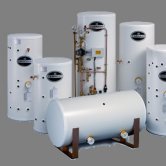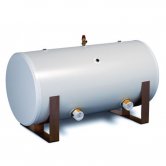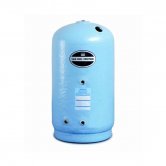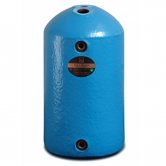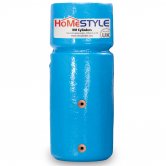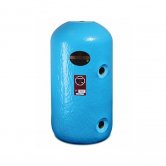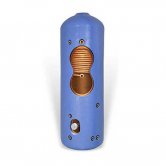Hot Water Cylinders
Hot water cylinders are used in mains-pressure and gravity-fed heating systems. The primary role of one is to store water and heat it via immersions or a coil. Generally, an indirect hot water cylinder will be heated by a coil with an immersion heater(s) as a back-up heat source. A direct hot water cylinder would be heated exclusively by immersion heaters. Cylinders are mostly made from stainless steel, although copper hot water cylinders are also popular.
There are two types of these cylinders found in UK homes, the older style vented system or the newer unvented system that operates directly from the cold water mains.
Our Hot Water Cylinders Brands
Filter Results
Choosing the Correct Hot Water Cylinder
For a hot water system that includes a hot water cylinder as an integral part, one of the most important things is ensuring it runs at maximum efficiency. To do this, the correct size of cylinder needs to be selected for it to meet the demands requested by a hot water system.
It can be a catch-22 situation. If you choose a cylinder that's too big, you'll be wasting energy as the cylinder will be heating more water than your system actually needs. On the other hand, a cylinder that's too small for a system that's used constantly will see the hot water supply quickly vanishing. That makes for some annoyed people who can't have a hot shower!
So, before you choose a size of hot water cylinder, it's important that you work out the demand that will be placed on hot water system over the course of a day, particularly during peak times.
To understand just how much water your hot water system consumes, consider the following examples
- Filling a bath will use an average of 70-80 litres of hot water.
- A 5-minute shower consumes 45 litres of hot water.
- Kitchen taps use 0.2 litres of hot water a second.
- A full washing machine load is 50-100 litres.
- A dishwasher uses 12-20 litres of hot water per cycle.
While it sounds simple, finding out the right size is a little more complicated. You can't just multiply the statistics above by the number of people consuming the water. You also must consider the pressure that peak time demands will put on the system, the capacity of the cylinder and the amount of time the water takes to re-heat.
Working Out The Cylinder Size
In a domestic situation, working out what size of cylinder you need is simpler as the average demand that a family home places on the system is more predictable. As a general rule, it's a good idea to work out the size of the cylinder based on the number of bedrooms, bathrooms and showers in the property. By using this scale, you should have a cylinder that provides an efficient source of hot water without running out, with some space for flexibility.
With a direct cylinder, the water is heated via an internal element such as an immersion heater. Of the two types, it tends to be more expensive when it comes to heating water. Indirect cylinders are fitted with a spiral heating coil and it's likely that you'll require a smaller capacity as it has more power than an immersion heater based cylinder

